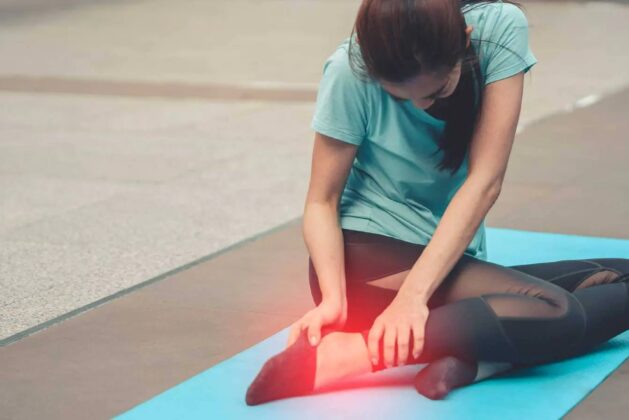[ad_1]
Have you ever felt a lot of pressure on your arms and legs when lifting something? This often happens when there is some type of foot injury or sprain. Size We ignore these minor injuries. And the same bone of the arm or shoulder is stressed many times. Therefore, it later takes the form of a fracture – we call it a stress fracture. We often face this type of injury and if we do not pay attention to them, it takes a fatal form.
So, for all of you, what is a stress fracture? And are you in danger? If so, how can you protect yourself? As the festival of Diwali is around the corner – many people are busy cleaning the house. That’s why it’s important to understand about stress fractures.
Do you know what a stress fracture is?
According to the Cleveland Clinic, a stress fracture is a very small crack in a bone. It is caused by repetitive strain or trauma to the bone and is more common in athletes. Stress fractures can occur in the femur, ankle, heel, hip, and lower back.
A stress reaction that is left untreated can turn into a stress fracture. Treatment for stress fractures usually involves rest.
Why do stress fractures occur?
Risk factors for stress fractures can be divided into two main categories: external and internal. External causes of stress fractures include:
exercise despite the injury
taking wrong sports exercises
not resting after an injury
running on a slope or road
to dance despite the injury
bad food or bad food
low vitamin D levels

External causes of stress fractures include:
age: It can also be caused by weak bones in older people.
Weight: A person with a low BMI or underweight may have weak bones, and a person with a high BMI is also at risk of injury.
gender: Women may be at risk for stress fractures if they have irregular periods or are not menstruating.
Medical conditions: Osteoporosis or other diseases that weaken the strength and density of bones.
So how can you protect yourself from stress breakouts?
Stop exercising when you feel pain. Return to exercise if you are pain free.
If you have any problem or pain in any part of your body, see your doctor as soon as possible.
Use sports equipment correctly.
Wear proper footwear. Replace shoes every 300 miles.
Introduce new sports activities slowly and gradually increase the time, speed and distance.
Reduce your intensity by 50% when resuming sport or activity.
Practice weight training to prevent early muscle fatigue.
Help prevent the loss of bone density that comes with aging.
Eat a healthy diet rich in calcium and vitamin D, which will keep your bones strong.
If you have osteopenia or osteoporosis, talk to your doctor about how to manage these conditions medically.
If pain or swelling returns, stop all activity and rest for a few days. If the pain persists, consult a doctor.
Also read: FUPA: Your favorite outfit is becoming a Karva Chauth obstacle, so know how to get rid of it
[ad_2]



Leave a comment